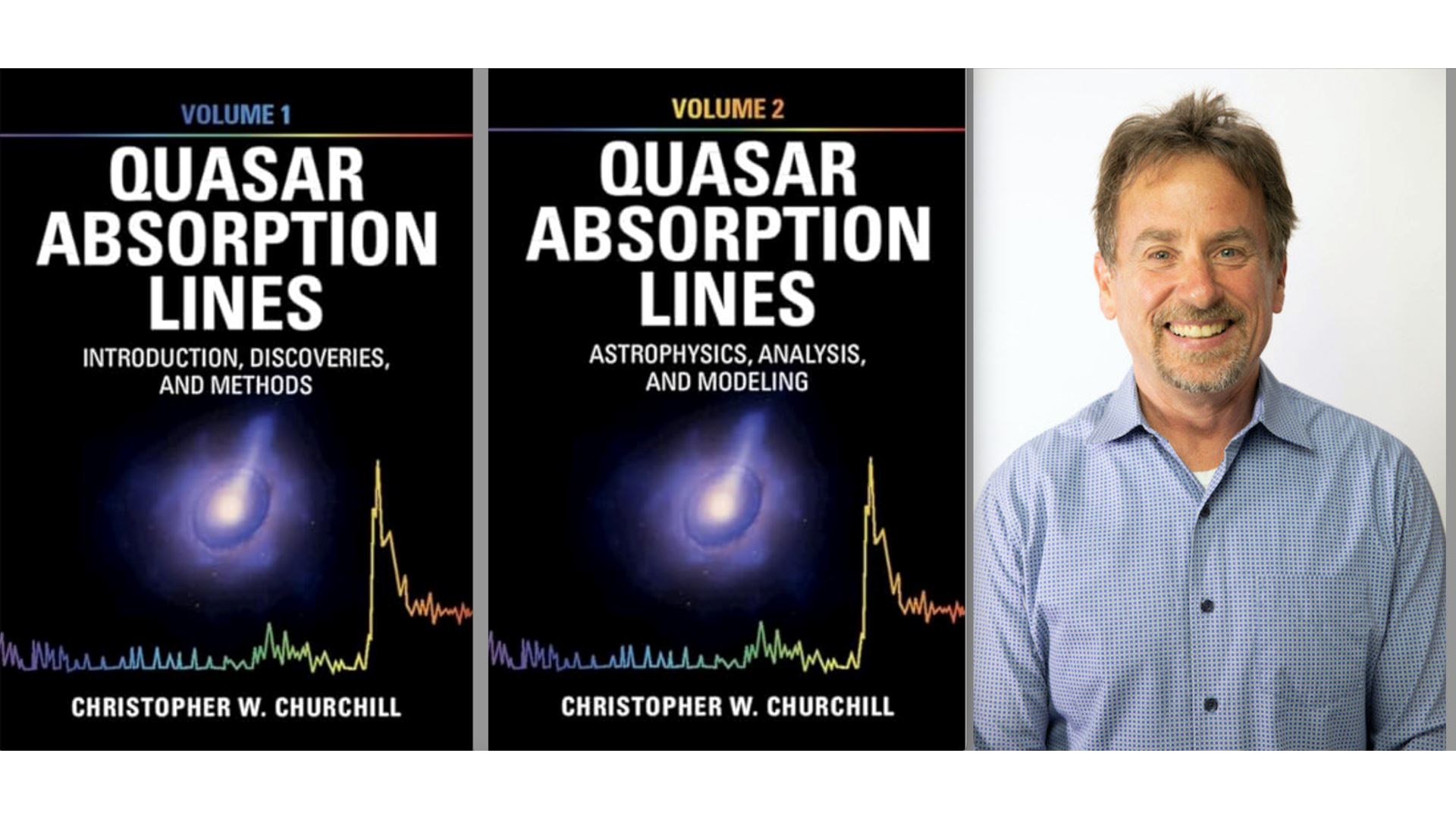lWhen it comes to quasars and the light they emit, we can say New Mexico State University Professor Christopher W. Churchill literally wrote the book. Or more accurately – books.
His definitive two-volume work, called “Quasar Absorption Lines,” to be published at the end of December 2025 by Cambridge University Press, does just that in what reviewers say “covers all of this systematically, clearly and in depth” while being “comprehensive and readable.”
When first discovered in March 1963, quasars were just mysterious, radio-emitting star-like objects that baffled astronomers. Now we know that quasars are the extremely bright cores of distant galaxies and are powered by supermassive black holes. Their bright light can travel for billions of light-years across the universe and allow us to see back to the very early cosmos. Because they let us look so far back in time, quasars are a kind of “science” time machine.
“Quasars are like lighthouses on the far side of the universe that we use to see across the universe,” Churchill said. “It took decades for us to figure out that quasars are actually supermassive black holes in the center of galaxies that are hungrily sucking down hundreds of thousands of surrounding stars every year. This violent process emits light so intense that a single quasar outshines 100,000 normal galaxies.”
Once we understood quasars, they revolutionized the science of astronomy.
“Now that we know what quasars are, we use their intense light to help us understand the universe,” Churchill said. “Their light beams probe the cosmos and its history just like a core sample into the Earth probes back in geologic time. When the quasar light reaches Earth, astronomers spread its light beam into a spectrum, like looking at the rainbow of colors from the Sun. Using quasar spectra, we study how galaxies were formed and evolve, how the chemical elements of the periodic table were created, and dozens of other scientific questions about the universe over its 13 billion years of existence.”
Over the last 60 years, astronomers have learned tremendous details about the universe from quasars spectra, but no one had summarized it into one place. Churchill saw the need for a comprehensive textbook to document and synthesize six decades of quasar research and teach quasar science methods to Ph.D. students and early-career scientists.
The two-volume opus of more than 1,500 pages has been a labor of love for Churchill, who first proposed the project in 2005.
“If people want to learn the history of quasars and all the quasar science, then Volume 1 is for them. If people want to learn how to analyze quasar spectra and undertake the science analysis itself, then Volume 2 is for them,” Churchill said. “I’m hoping these two books will ultimately contribute to the growth of young people so they can use the technique of quasar spectroscopy to learn more about the universe and the cosmos.”
“Quasar Absorption Lines” is a new tool with which others can work to further their astronomy interests and scholarly explorations. One thing Churchill really wants students to learn is how revolutionary the discovery of quasars was.
“Before quasars were discovered, astronomers scratched their heads looking at black and white photographs of objects sitting in what was seen as an infinite space of nothingness. Quasars showed us that the universe is chock full of stuff that doesn’t emit light. They let us see all this cosmic stuff in the silhouettes of their light beams that we would otherwise never have seen.”
There were many questions about the universe. Quasars helped to answer many of them as well as open our minds to new questions about the universe. Churchill’s monumental effort is being praised as an encyclopedia of knowledge about quasars and a phenomenal achievement that will be used as a reference for many years to come.
Learn more about Churchill and his research.
-30-
CUTLINE: New Mexico State University Astronomy Professor Christopher W. Churchill’s two-volume textbook called “Quasar Absorption Lines” covers everything that happened in the science of quasars for the last 60 years and will be published at the end of December by Cambridge University Press. (Courtesy image)
CUTLINE: NMSU Astronomy Professor Christopher W. Churchill studies galaxy evolution using the technique known as "quasar absorption lines." He recently completed a two-volume textbook titled “Quasar Absorption Lines” to be published in December 2025 by Cambridge University Press. (Courtesy photo)

